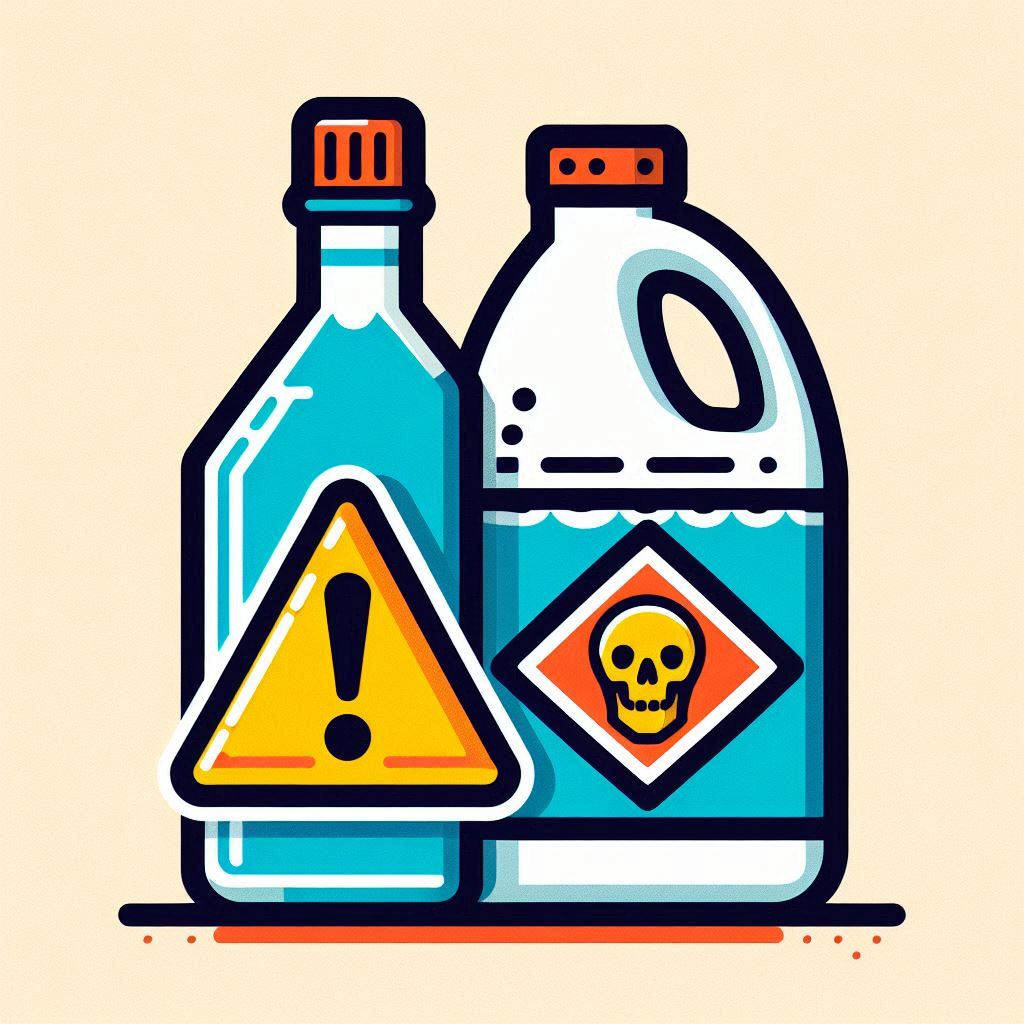Cleaning is a regular part of maintaining a healthy home. Many of us reach for household staples like bleach and vinegar, known for their powerful disinfecting properties. While these two substances are effective cleaners on their own, they should never be combined. Mixing bleach and vinegar can create a toxic gas that is dangerous to your health and the safety of your home.
In this blog, we’ll break down why bleach and vinegar are both powerful in their own right but hazardous when mixed, along with the science behind the reaction, the risks involved, and safe alternatives for household cleaning.
Understanding Bleach and Vinegar
Bleach (sodium hypochlorite) is commonly used for whitening clothes, disinfecting surfaces, and killing germs. It’s a powerful chemical that breaks down stains and kills bacteria by releasing chlorine.
Vinegar (acetic acid) is a natural cleaner used to remove grime, hard water stains, and deodorize. It’s a favorite in homes for those looking for a non-toxic, eco-friendly alternative to chemical cleaners.
Individually, both bleach and vinegar are effective. But the idea of combining them to create a “super-cleaning” solution is a dangerous myth that could lead to serious consequences.
The Chemistry of the Reaction
When bleach and vinegar are mixed, the acid in the vinegar causes the bleach to release chlorine gas, a highly toxic substance that was even used as a chemical weapon during World War I. This chlorine gas is hazardous even in small amounts and can cause immediate symptoms like:
Irritation of the eyes, nose, and throat: Exposure to chlorine gas can quickly irritate mucous membranes, causing pain, burning sensations, and redness.
Respiratory issues: Inhaling chlorine gas can lead to coughing, difficulty breathing, and in severe cases, fluid buildup in the lungs (pulmonary edema), which is potentially life-threatening.
Skin and mucous membrane damage: Chlorine gas exposure can cause chemical burns and serious damage to skin and eyes with prolonged exposure.
What Happens When You Inhale Chlorine Gas?
Even brief exposure to chlorine gas can be dangerous. Depending on the concentration and duration of exposure, symptoms can range from mild irritation to more severe effects, including:
Burning sensations in the throat and lungs
Chest tightness and wheezing
Coughing and difficulty breathing
High levels of exposure can cause fluid buildup in the lungs, which can develop several hours after initial exposure. This is a medical emergency requiring immediate attention.
Why You Should Never Take the Risk
The release of chlorine gas can happen even in small, poorly ventilated areas like a bathroom or kitchen, making the situation even more dangerous. People often think that adding more cleaning agents will give better results, but in the case of bleach and vinegar, this can lead to a hazardous scenario very quickly.
Even if you don’t immediately notice the smell of chlorine, it’s still possible for low concentrations of the gas to be harmful over time.
Safe Cleaning Alternatives
Instead of taking the risk of mixing bleach and vinegar, here are some safer cleaning alternatives:
Use bleach alone: If you’re looking to disinfect surfaces, bleach works effectively on its own. Just dilute it with water (typically 1 cup of bleach per gallon of water) to safely clean and disinfect areas.
Use vinegar for natural cleaning: Vinegar is great for cutting through grease, removing soap scum, and deodorizing. If you want to avoid harsh chemicals, vinegar is a safe option, especially for areas like countertops, glass, and appliances.
Hydrogen peroxide: Another powerful disinfectant, hydrogen peroxide can be used as a bleach alternative for disinfecting surfaces and killing germs without creating harmful fumes.
Commercial cleaners: There are many multi-surface cleaners available that are formulated to be safe and effective. Choose a cleaner based on the job you need done without combining chemicals yourself.
Final Thoughts
While both bleach and vinegar are useful in their own ways, the hazards of mixing the two are far too dangerous to ignore. The production of chlorine gas can pose serious health risks, and in a world where there are so many safe cleaning options, there’s no reason to take that risk.
So, the next time you’re ready to tackle a tough cleaning job, remember to use bleach or vinegar—but never both together. Your health and safety are far more important than any quick cleaning fix.

